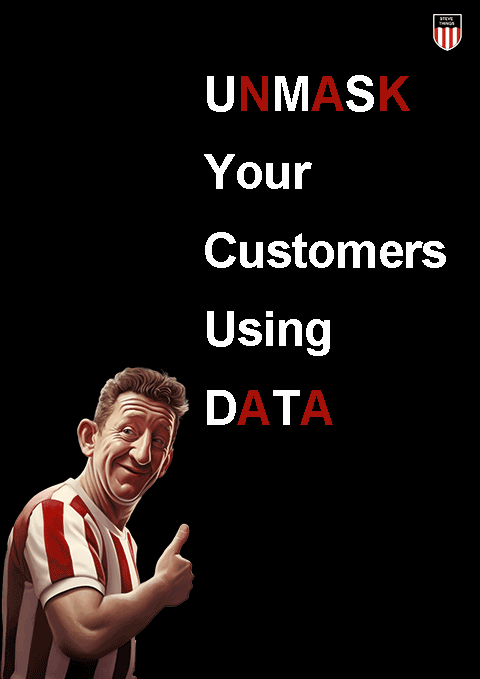The future of customer data is already here, and it’s centred around artificial intelligence (AI), machine learning, and predictive analytics.
We’re in the midst of a digital revolution that’s transforming the way businesses interact with their customers. As technology advances, so do customer data platforms, which are becoming increasingly sophisticated and powerful tools for gathering insights into consumer behaviour.
Artificial Intelligence in 2023
Generative AI (ChatGPT and OpenAI specifically) has opened everyone's eyes to the power of artificial intelligence. Generative AI could maybe be an analytics source from a new kind of chatBot from a CDP perspective but it isn't the main point. The main point is that AI and ML have been core to CDPs for years and are getting cleverer all the time. It's part of the reason they are so exciting to work on.
Businesses today must be able to quickly process vast amounts of customer data in order to stay competitive. AI-driven customer data platforms can help them gain valuable insights about their customers by leveraging machine learning algorithms and predictive analytics. With these technologies, businesses can gain a better understanding of their customers’ preferences and create personalised experiences that are tailored to individual needs. Additionally, AI helps them identify trends in customer behaviour so they can react quickly to changing market dynamics and make informed decisions that will drive growth.
AI-driven customer data platforms have the potential to revolutionise the way businesses interact with their customers. It’s an exciting time for customer data platforms – one that promises to revolutionise how companies engage with their customers for years to come.
Definition Of CDPs
Customer data platforms (CDPs) are software tools that allow organisations to collect, store, analyse, and use customer data to gain insights and make informed decisions. CDPs provide businesses with a unified view of all their customer data, enabling them to create personalised experiences for customers and develop an in-depth understanding of their behaviours.
I've defined CDPs on this website before as well as the top 5 things all businesses can get from a CDP.
But to remain competitive, many organisations are now investing in predictive analytics, artificial intelligence (AI), and machine learning capabilities within their CDPs. These technologies enable companies to identify patterns in customer behaviour and anticipate future trends.
At the same time, CDPs enable organisations to remain compliant with industry regulations and protect sensitive customer data from potential threats. By ensuring that all customer data is secure and up-to-date, businesses can ensure they are following best practices for data privacy and security. With the right approach, CDPs can be a powerful tool in helping companies maximise their potential—and unlock new benefits for your business.
Benefits For Businesses
CDPs offer a range of benefits, including improved customer segmentation, better personalisation, and enhanced customer insights. With the help of AI and machine learning capabilities, companies can gain a deeper understanding of their customers and use that knowledge to drive engagement and increase revenue.
Using predictive analytics, businesses can anticipate customer needs and take proactive steps to meet them. By leveraging AI-powered algorithms, companies can effectively target customers with relevant offers based on their past behaviours.
Use Of Automation And Artificial Intelligence
The use of automation and artificial intelligence (AI) in CDPs is becoming increasingly popular. Automation helps to streamline the customer experience, while AI-powered algorithms can analyse customer data to provide businesses with valuable insights into their customer base. This is where in the future we may see generative AI appear to help customers answer questions. For instance, imagine Todd our intrepid Australian fisherman asking a chatbot on a travel site about the fishing opportunities in Italy before booking his trips.
At the same time, AI-based predictive analytics can help you anticipate Todd's needs and take proactive steps to meet them. By leveraging AI-powered algorithms, you could effectively target customers with relevant offers based on their past behaviours. In Todd's case it might be something like producing a potential itinerary via OpenAi powered tools that takes into account he's travelling to Italy and is interested in fishing.
TIP: Visualise the future of your business today by leveraging the power of AI, machine learning, and predictive analytics within a CDP platform. With this advanced technology at your fingertips, you can unlock insights into your customers, create personalised experiences that will drive engagement, and remain compliant with industry regulations—all while protecting your customers’ sensitive data.

Leveraging Machine Learning
As businesses become more technology-savvy, machine learning is becoming an invaluable tool for CDPs. Machine learning uses algorithms to analyse data and identify patterns and trends in customer behavior. This helps organizations to better understand their customers and enables people to work on more strategic things.
Here are four ways that companies can use machine learning to improve their CDPs:
-
Automate data collection and segmentation: Machine learning can automate the process of collecting, organising, and segmenting customer data. This allows companies to quickly gain insights into customer behavior without having to manually enter data into a system. For instance creating tables and adding data to a data warehouse from a CDP is automated many systems. No setup required from a data scientist or engineer.
-
Provide targeted recommendations: Machine learning can be used to provide customers with personalised product recommendations based on their past purchases or interactions with the company. This helps companies create a more engaging experience for customers by providing them with tailored options that meet their needs. This could also be done proactively with tools like chatbots that feed the information back to the CDP.
-
Improve marketing campaigns: By leveraging machine learning, businesses can develop more effective marketing campaigns based on customer preferences and behaviours. Organisations can also use this technology to identify new opportunities for growth while optimising existing campaigns for maximum ROI. For instance, Todd travels to Italy (without visiting your businesses website) but your CDP sees that he is there on Facebook. A campaign trigger is fired and Todd sees your ad about fishing in Italy, when he is right there in the destination.
-
Optimise customer service: Machine learning can be used to optimise customer service by helping agents anticipate customer questions and automatically responding to common inquiries. This allows companies to respond quickly and efficiently while providing customers with personalized support when they need it most.
With the power of AI, machine learning, and predictive analytics at their fingertips, businesses are now able to leverage cutting-edge technology within their CDP platform in order to unlock insights into their customers and boost engagement across all channels—ultimately leading to increased loyalty from customers who feel valued and understood by the brands they love.
So Todd loves us. Rock on.
Let's move to what we can predict about Todd.
Predictive Analytics Applications
Predictive analytics is a powerful tool that can be used to anticipate customer needs. By using predictive analytics, businesses can create highly targeted campaigns that are tailored to each customer’s individual interests and behaviours. Here are some of the ways that organisations can use predictive analytics within their CDPs:
-
Create customer profiles: Predictive analytics can be used to generate detailed customer profiles based on past purchases, interactions with the company, and other data points. This allows companies to understand each customer’s needs and preferences more deeply, which can lead to more personalised experiences. These profiles can also be used to create personas and lookalike audiences.
-
Analyse customer behaviour: Predictive analytics can help you identify patterns in customer behaviour and anticipate future actions. In Todd's case for instance. He might in 6 months time be looking for another trip outside of Australia and it might be good to talk about Fishing. So in 4 months (because that's what your algorithm says is the best chance to reach Todd in the planning phase) you send an email outlining what you have going on in Spain, because Spain is according to the numbers likely to be Todds next destination.
-
Automate marketing campaigns: Like machine learning predictive analytics also enables marketers to automate campaigns based on customer profiles and past behaviours. This allows you to send timely, relevant messages at the right times without having to manually track every interaction or action taken by customers. So in Todds case it's the trigger to send the email about Spain firing off the email campaign.
Customer data is key
Customer data platforms have the potential to revolutionise the way businesses interact with their customers and prospects in the future without compromising privacy.
CDPs are a useful tool for any business looking to stay competitive in today’s market. With the right implementation, they can help you gain a much deeper understanding of your customers’ needs and preferences. This will enable you to create more tailored and effective marketing strategies that will ultimately lead to increased customer satisfaction and loyalty.
The future of CDPs looks promising; by continuing to develop new technologies and techniques, businesses will be able to gain even more insights into their customers’ behaviours. This will allow them to offer truly personalised services that are sure to set them apart from their competitors.

